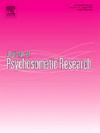I'm tired of pretending that nothing's wrong: A mixed-methods study of financial barriers for individuals living with primary dysmenorrhea
IF 3.5
2区 医学
Q2 PSYCHIATRY
引用次数: 0
Abstract
Background
Primary dysmenorrhea (PD), or pain in the abdomen experienced during menstruation, remains under-recognised, leading to poorer financial outcomes for those affected.
Aim
The current study aimed to explore individual perspectives of financial burden relating to PD, while also examining the impact of biopsychosocial factors on reported financial barriers.
Method
Participants completed an online survey between May and July 2019 measuring pain, symptoms of depression, anxiety, and stress, fatigue, perceived social support, sociodemographic information, days of work or school missed, and number of GP or specialist visits due to pain per year. Open-ended questions relating to financial impact of PD and suggested workplace supports were included in a two-year follow-up survey. Template thematic analysis was conducted, and themes were then entered as outcome measures in binary logistic regression models, using biopsychosocial variables as predictors.
Results
Australian women who experienced PD, measured by a numeric rating scale for period pain, were recruited (n = 140). Three themes were developed: Burden of Healthcare and Financial Disempowerment, Reduced Workplace Participation and Stigma and Prejudice. Pain (OR = 1.568, 95 % CI = 1.195–2.058), fatigue (OR = 1.050, 95 % CI = 1.013–1.089) and perceived family support (OR = 0.715, 95 % CI = 0.522–0.980) significantly predicted Stigma and Prejudice.
Conclusion
Increased pain or fatigue severity and reduced perceived family support may be associated with Stigma and Prejudice as a financial barrier for those with PD. Improved recognition of the impact of PD at a governmental level may help to address stigma, thus reducing the financial burden for those affected and society as a whole.
我厌倦了假装一切正常:一项针对原发性痛经患者经济障碍的混合方法研究
原发性痛经(PD),或月经期间腹部疼痛,仍未得到充分认识,导致患者的经济状况较差。目的本研究旨在从个体角度探讨帕金森病相关的经济负担,同时研究生物心理社会因素对报告的经济障碍的影响。参与者在2019年5月至7月期间完成了一项在线调查,测量疼痛、抑郁症状、焦虑和压力、疲劳、感知的社会支持、社会人口统计信息、缺勤或缺课天数,以及每年因疼痛而就诊的全科医生或专科医生次数。在一项为期两年的随访调查中,研究人员提出了与PD的财务影响和建议的工作场所支持有关的开放式问题。进行模板主题分析,然后将主题作为二元逻辑回归模型的结果测量,使用生物心理社会变量作为预测因子。结果:我们招募了140名患有PD的澳大利亚女性,并对她们的经期疼痛进行了数值评定。会议确定了三个主题:医疗保健负担和经济权利丧失、工作场所参与率降低以及污名化和偏见。疼痛(OR = 1.568, 95% CI = 1.195 ~ 2.058)、疲劳(OR = 1.050, 95% CI = 1.013 ~ 1.089)和感知到的家庭支持(OR = 0.715, 95% CI = 0.522 ~ 0.980)显著预测污名化和偏见。结论:耻辱感和偏见作为PD患者的经济障碍可能与疼痛或疲劳严重程度的增加和家庭支持的减少有关。在政府层面提高对PD影响的认识可能有助于消除耻辱感,从而减轻受影响者和整个社会的经济负担。
本文章由计算机程序翻译,如有差异,请以英文原文为准。
求助全文
约1分钟内获得全文
求助全文
来源期刊
CiteScore
7.40
自引率
6.40%
发文量
314
审稿时长
6.2 weeks
期刊介绍:
The Journal of Psychosomatic Research is a multidisciplinary research journal covering all aspects of the relationships between psychology and medicine. The scope is broad and ranges from basic human biological and psychological research to evaluations of treatment and services. Papers will normally be concerned with illness or patients rather than studies of healthy populations. Studies concerning special populations, such as the elderly and children and adolescents, are welcome. In addition to peer-reviewed original papers, the journal publishes editorials, reviews, and other papers related to the journal''s aims.

 求助内容:
求助内容: 应助结果提醒方式:
应助结果提醒方式:


